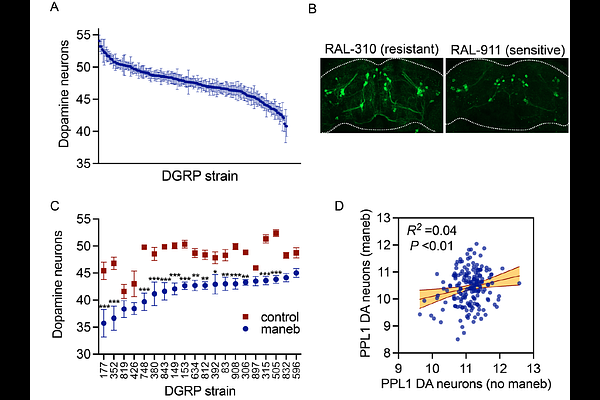Genetic basis of maneb-induced dopaminergic neurodegeneration in Drosophila

Genetic basis of maneb-induced dopaminergic neurodegeneration in Drosophila
Villalobos-Cantor, S.; Arreola-Bustos, A.; Martin, I.
AbstractParkinson's disease (PD) is a complex neurodegenerative disease driven by combined genetic and environmental factors. Human studies support increased PD risk following exposure to the pesticide maneb yet animal studies generally report subtle or no dopaminergic phenotypes unless maneb is combined with additional pesticides. Consequently, it is unclear whether exposure to maneb alone promotes dopamine (DA) neurodegeneration and if so, what the underlying mechanisms are. We hypothesized that gene-environment interactions are major determinants of maneb-mediated neurodegeneration and in support of this find that DA neuron viability is quantitatively divergent among 186 maneb-exposed genetically varying fly strains from the Drosophila Genetic Reference Panel (DGRP). Through genome-wide association analysis we identify several candidate genetic modifiers of maneb-induced DA neurodegeneration and further validate two candidate genes, fz2 and CG14186 which we find potentiate maneb-induced DA neurodegeneration when knocked-down. fz2 and the mammalian ortholog of CG14186 (TMEM237) are both thought to be necessary for intact Wnt pathway signaling in nervous system development and maintenance. Accordingly, we find that adult-specific perturbation of Wnt signaling is sufficient to promote maneb-induced DA neuron loss. Collectively, these results support a role for gene-environment interactions in PD etiology and reveal candidate mediators of maneb-related DA neurodegeneration in vivo.